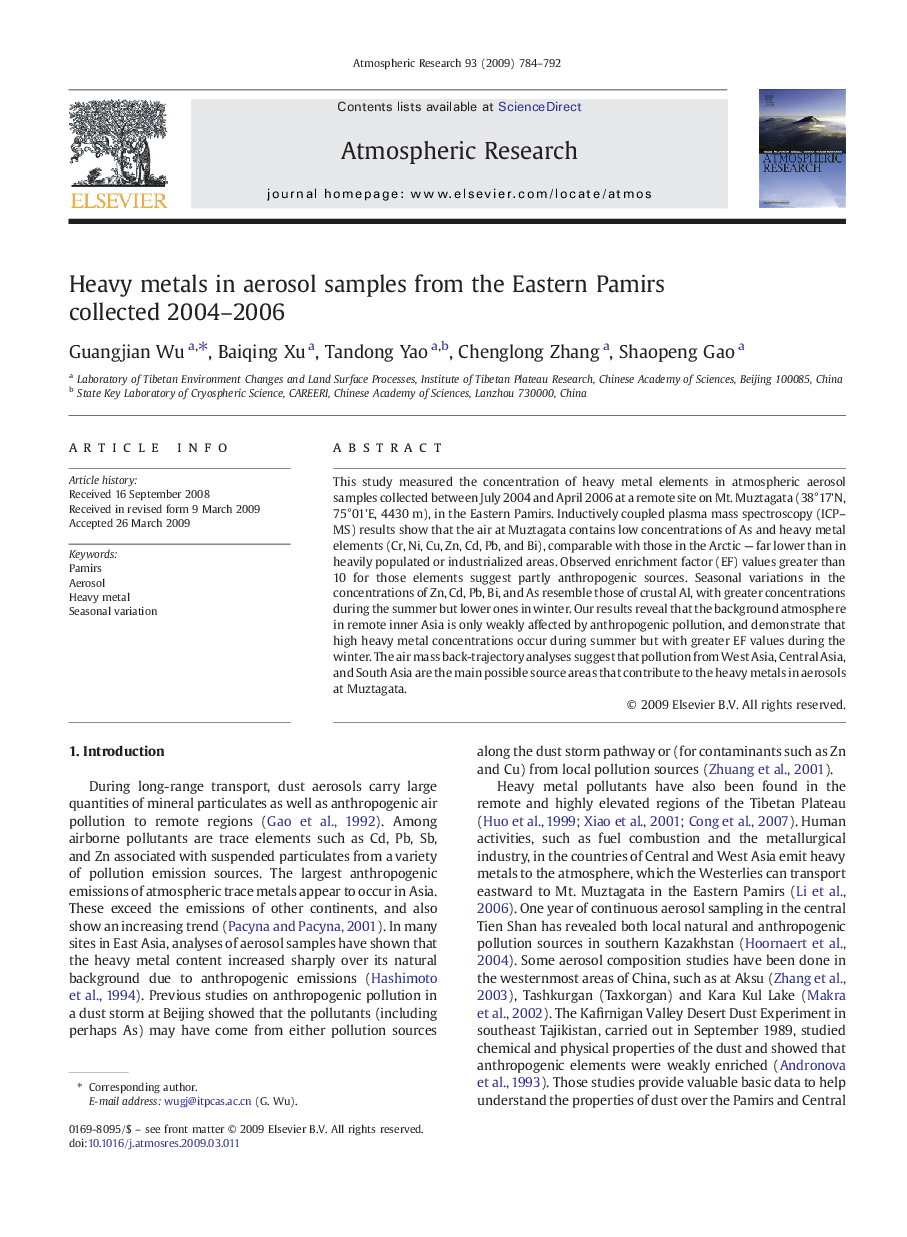| Article ID | Journal | Published Year | Pages | File Type |
|---|---|---|---|---|
| 4450953 | Atmospheric Research | 2009 | 9 Pages |
This study measured the concentration of heavy metal elements in atmospheric aerosol samples collected between July 2004 and April 2006 at a remote site on Mt. Muztagata (38°17'N, 75°01'E, 4430 m), in the Eastern Pamirs. Inductively coupled plasma mass spectroscopy (ICP–MS) results show that the air at Muztagata contains low concentrations of As and heavy metal elements (Cr, Ni, Cu, Zn, Cd, Pb, and Bi), comparable with those in the Arctic — far lower than in heavily populated or industrialized areas. Observed enrichment factor (EF) values greater than 10 for those elements suggest partly anthropogenic sources. Seasonal variations in the concentrations of Zn, Cd, Pb, Bi, and As resemble those of crustal Al, with greater concentrations during the summer but lower ones in winter. Our results reveal that the background atmosphere in remote inner Asia is only weakly affected by anthropogenic pollution, and demonstrate that high heavy metal concentrations occur during summer but with greater EF values during the winter. The air mass back-trajectory analyses suggest that pollution from West Asia, Central Asia, and South Asia are the main possible source areas that contribute to the heavy metals in aerosols at Muztagata.
